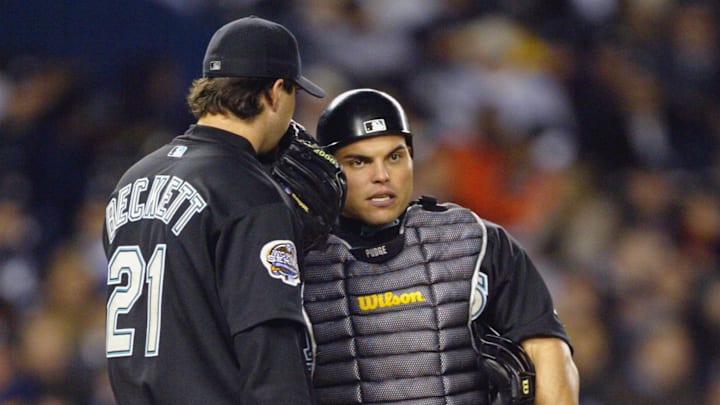Number 1: Ivan "Pudge" Rodriguez
The case for Pudge to be on this list is much like the case for Kinsler. The Rangers after the 2002 season thought Pudge was washed. He had missed significant time in 2000, 2001, and 2002 seasons. They made the choice after 2002 to not offer salary arbitration that would have paid him 12 million for the 2003 season. The Rangers who had signed Alex Rodriguez in December 2000 were now trying to cut the team payroll. They traded for Einar Diaz to replace him
Pudge ended up signing with young Marlins team in 2003 on a one year contract. He was a leader for that Marlins team that shocked everyone and won the World Series behind one of the youngest rotations in all of baseball. He then signed a lucrative contract with the Detroit Tigers and led them from a 100-loss season to the World Series in three years. He was a great catcher for a Tigers staff that included rookie Justin Verlander.
The Rangers struggled at the catcher position for the rest of the decade trying out guys like Diaz, Rod Barajas, Gerald Laird, Jarrod Saltalamachia, Bengie Molina, and then finally hit on Mike Napoli in 2011. It was a struggle though at that position and led to a decade of sadness because the front office underestimated how good Pudge was and how much he had left in his career. Pudge did briefly come back to Texas in 2009 before finishing out his career playing for the Washington Nationals in 2011.
The Rangers had their reasons for giving up on each of these players, but in these seven cases it did not work out for the team. It led to more disappointment for the team and success for many of these players.
